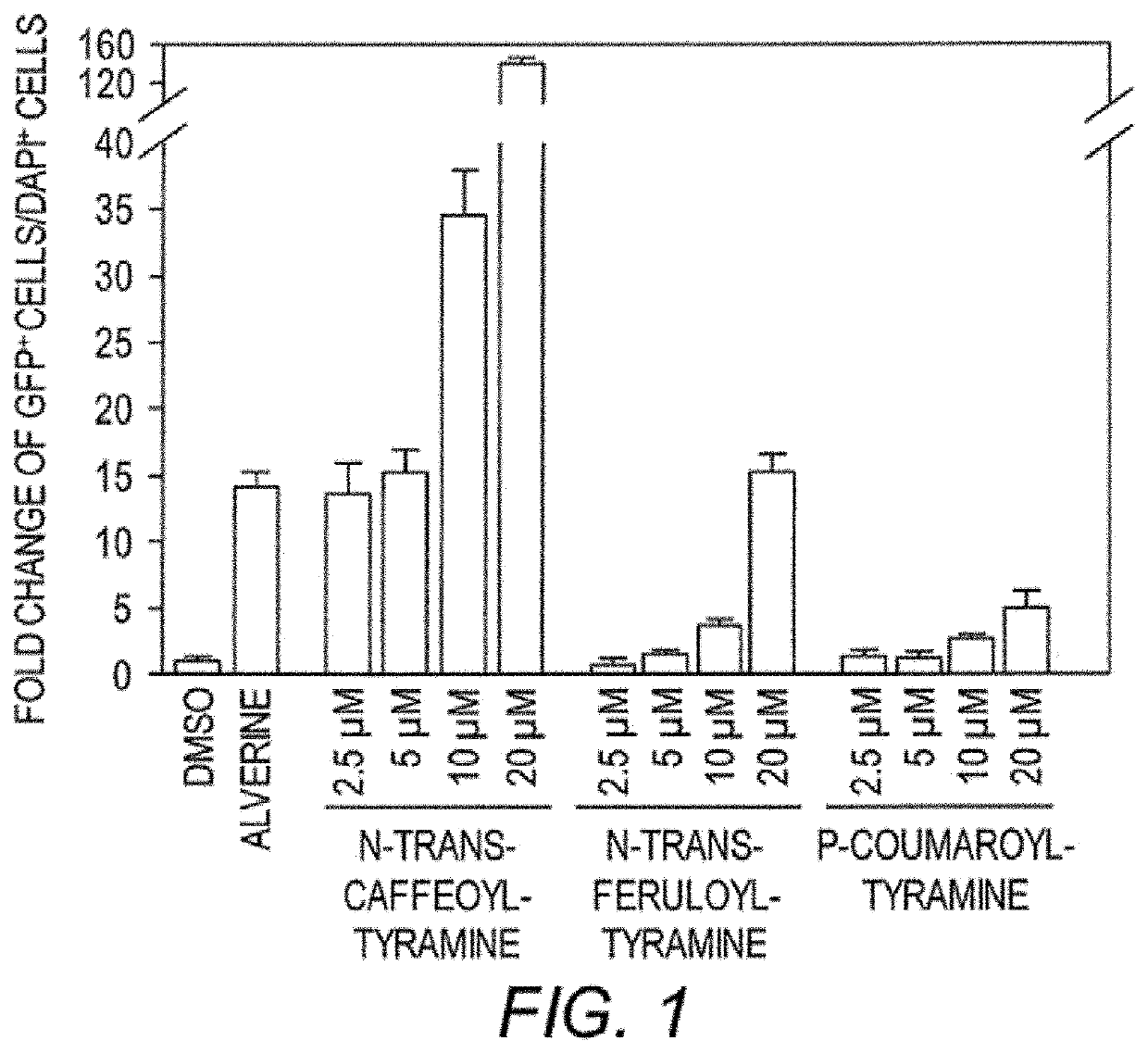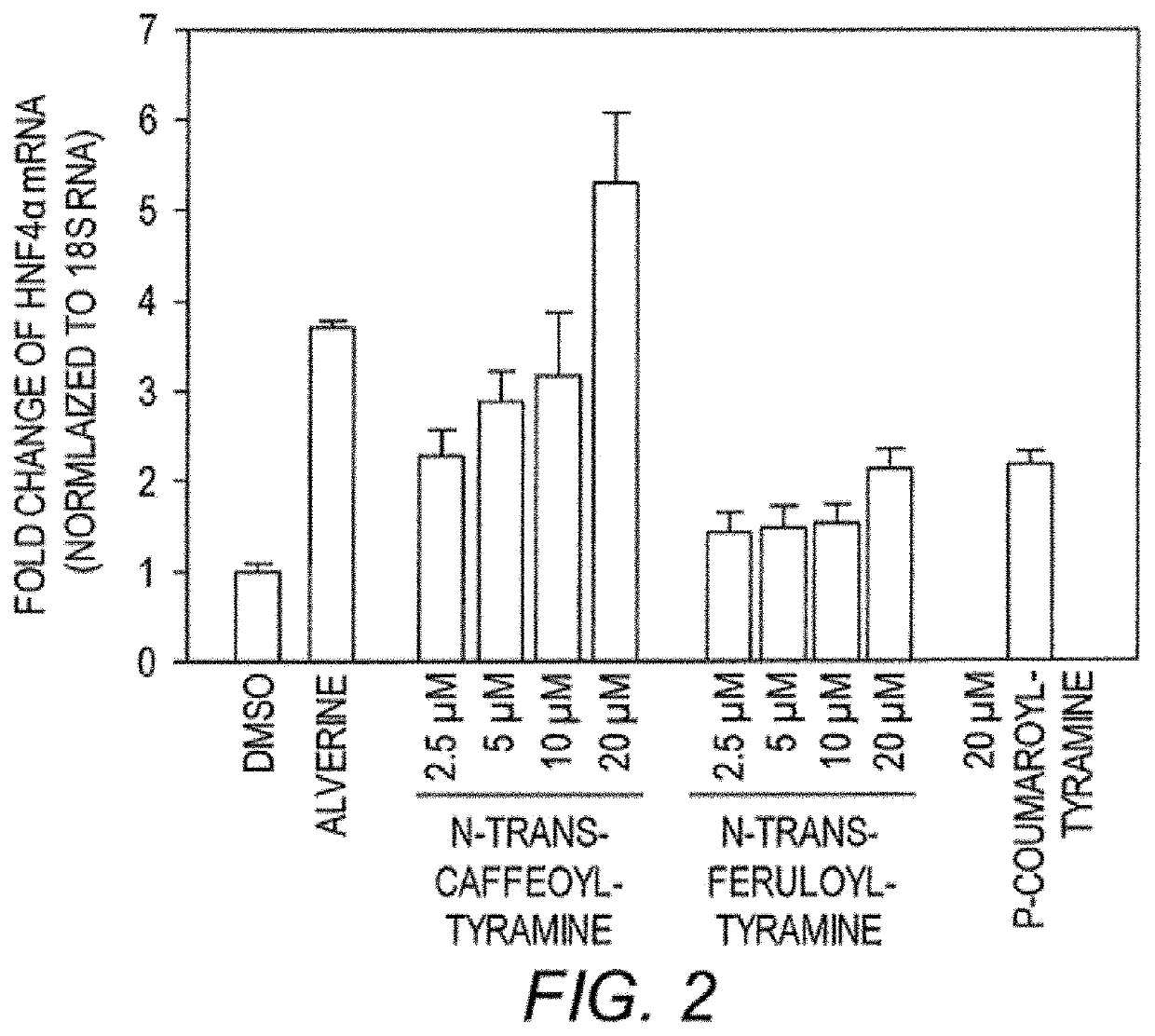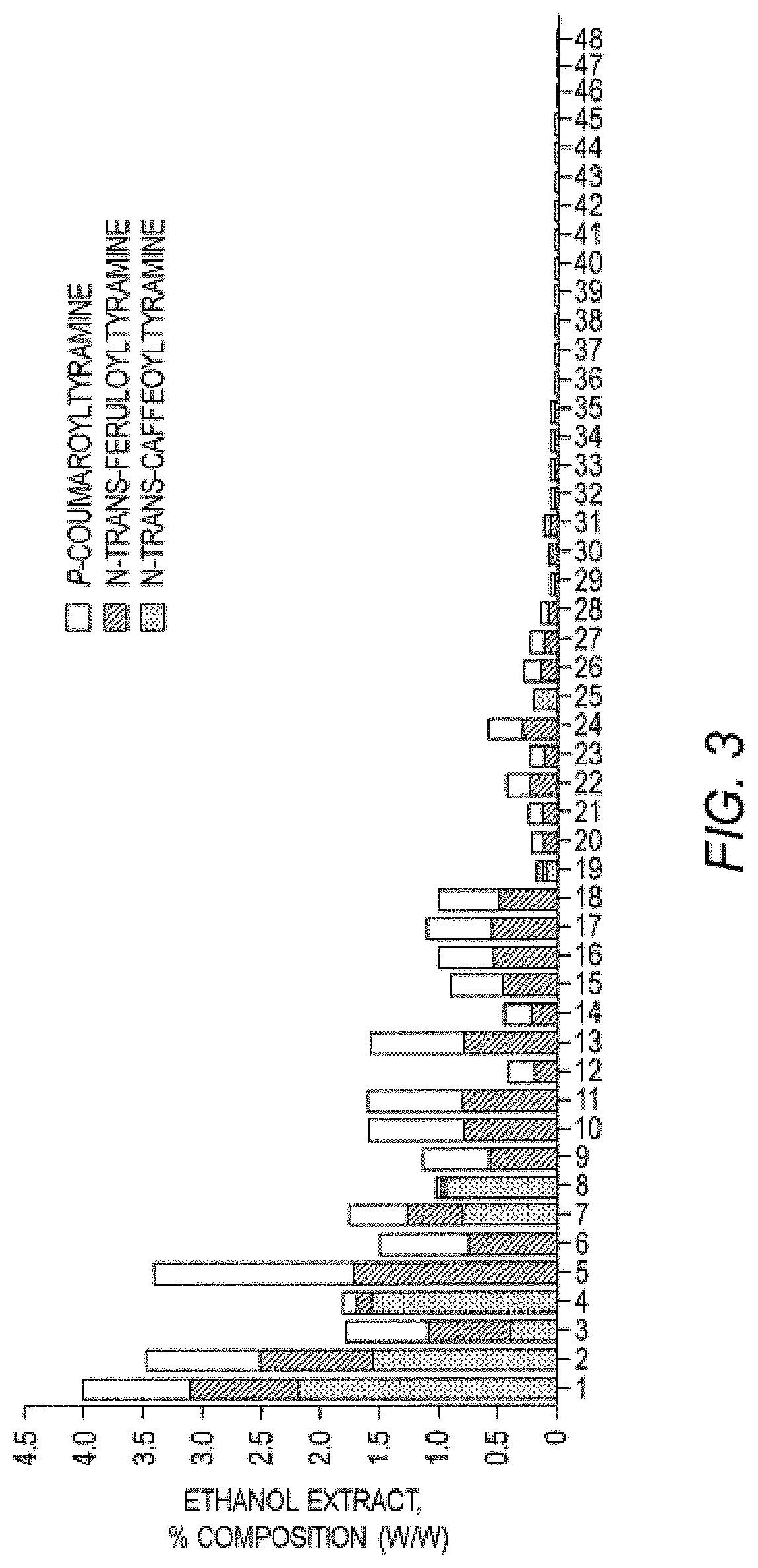Method for improving digestive health
a digestive health and digestive system technology, applied in the field of digestive health improvement, can solve the problems of overestimating the cost of current treatment and the actual prevalence of ibd, and achieve the effect of improving digestive health
- Summary
- Abstract
- Description
- Claims
- Application Information
AI Technical Summary
Benefits of technology
Problems solved by technology
Method used
Image
Examples
example 1
Indicators of Metabolic Activity: Materials and Methods
[0161]Expression of Insulin and HNF4α. RNA was purified using a RNEASY® chromatographic separation and isolation kits (Qiagen), and converted to cDNA using the gScript™ cDNA SuperMix (Quanta Biosciences). Q-PCR was conducted with cDNA corresponding to 2 μg of RNA using an Optic on Real-Time System (MJ Research) and QPCR SuperMix (BioPioneer). See All mRNA values were normalized to 18S rRNA values and are expressed as fold changes over vehicle-treated control.
[0162]Primary Antibodies. HNF4α antibodies were used (#sc-6556, Santa Cruz Biotechnology; Santa Cruz, Calif. and #3113, Cell Signaling Technology; Danvers, Mass.). For fluorescent imaging, samples were incubated with ALEXA FLUOR® 488 green-fluorescent dye or Rhodamine labeled anti-mouse, rabbit or goat and nuclei were counterstained with DAPI (4′,6-diamidino-2-phenylindole). antibodies alone were used immunostaining. Fluorescently Controls to ensure labeled using secondary s...
example 2
Compounds for Activity as HNF4α Agonists
[0166]Given the role of HNF4α in maintaining a healthy metabolism in humans, test compounds were screened for activity as HNF4α agonists (either direct or indirect effects). Using a known insulin promoter-reporter assay, Kiselyuk and colleagues (2010. J. Biomol. Screen 15(6): 663-70), screened a library of compounds for activity to promote insulin activation. They identified compound 1 as an insulin activator (Kiselyuk, et al. (2012) Chem. Biol. 19(7): 806-18) and the compound was subsequently shown to possess HNF4α agonistic activity in an ornithine transcarbamoylase (OTC) promoter assay. The OTC promoter is known to be responsive to HNF4α in transient transfection assays (Inoue, et al. (2002) J. Biol. Chem. 277:25257-65).
[0167]To identify plant compounds that have similar bioactivity as this synthetic agent (compound 1), a bioinformatics approach was taken to predict, from the set of all known plant compounds, a targeted sub-set with the des...
example 3
n of Compound-Related Toxicity
[0170]Given the need to balance benefits and risks of the compounds of the present disclosure, in vivo toxicity studies in laboratory animals (e.g., mice, rats, dogs) are typically performed. Such studies are typically performed consistent with Good Laboratory Practice (GLP) regulations to ensure reliability and reproducibility for regulatory purposes. If compounds are to be administered for periods of weeks to months to years in humans, chronic toxicity studies typically are performed (studies of from six months to one year in duration). For compounds to be used in foods, oral toxicity studies are recommended.
[0171]The purpose of chronic toxicity testing is to determine the toxicological profile of a test compound. In the initial phase of testing, a study will be performed in rats. A total of 160 Sprague Dawley rats (80 males and 80 females) approximately 5-7 weeks old and weighing between 80-100 g each will be randomly selected and allocated to treatm...
PUM
| Property | Measurement | Unit |
|---|---|---|
| temperature | aaaaa | aaaaa |
| chromatographic purity | aaaaa | aaaaa |
| chromatographic purity | aaaaa | aaaaa |
Abstract
Description
Claims
Application Information
 Login to View More
Login to View More - R&D
- Intellectual Property
- Life Sciences
- Materials
- Tech Scout
- Unparalleled Data Quality
- Higher Quality Content
- 60% Fewer Hallucinations
Browse by: Latest US Patents, China's latest patents, Technical Efficacy Thesaurus, Application Domain, Technology Topic, Popular Technical Reports.
© 2025 PatSnap. All rights reserved.Legal|Privacy policy|Modern Slavery Act Transparency Statement|Sitemap|About US| Contact US: help@patsnap.com



